C-section scar pain is a very real issue for mothers who have had to go through such a rigorous procedure.
You see, C-section scar pain isn’t just the physical pain you end up enduring for weeks and sometimes even years on end after the surgery.
It’s also the potential mental trauma from various other sources.
Before we go any further, let’s clarify what exactly a Cesarean section is.
A Cesarean section is a procedure that has become a more frequent occurrence in modern times.
It’s an alternative to vaginal birth when the latter becomes very risky or even impossible, due to some unforeseen complications during pregnancy.
Cesarean delivery is sometimes necessary for either the child or mother (sometimes both) to be able to survive with minimal risk of fatality or injury. But it’s not without its consequences.
There are many who believe a C-section isn’t a legitimately natural way of giving birth.
As a result, a woman who has made that conscious decision (or who has had that decision made for her due to health reasons) often ends up being ostracized by her peers.
It’s not the most pleasant feeling, believe me, and can do a number on your mental health, especially in the first few fragile weeks of postpartum.
But, that barely scratches the surface of the issues that make up C-section scar pain.
Let’s go through them together and I’ll give some advice on how to deal with these problems and reduce their impact.
How A C-Section Is Performed

A Cesarean section is a relatively fast procedure where the surgeon makes two quick incisions to be able to get the baby out.
One is made alongside the mother’s abdomen and the other on her uterus to break the two barriers between him and the baby.
Varying in length between 4-6 inches, these incisions serve as an alternate exit for the child. In this way, the doctor can reach in to pull the baby out, sever the umbilical cord, and stitch the mother back up.
C-section scars come in two forms, the classic and the bikini line cut.
The former is a more traditional vertical cut that saves on time but ends up being a lot more painful, while the latter is a horizontal one that’s easier to mask later.
The uterine stitch uses a suture made from dissolvable stitches so that it doesn’t end up causing complications and infections down the line.
Meanwhile, the abdominal suture can be done through a handful of methods depending on which one is preferred.
How To Prevent Post C-Section Scar Pain
Depending on the skill of the doctors and the effectiveness of the healing process afterwards, the scar should be barely noticeable, but sometimes it isn’t.
It also depends from person to person and the way their body reacts to scars.
Luckily, there are a few things that you can do to help optimize the healing process yourself.
These are things your doctor is going to tell you regardless, but here’s a bit of a quick reference guide.
1. Keep the incision and area around it clean

The spot is going to get as dirty as any other area on your body after some time, so don’t be afraid to clean the area. Otherwise, you risk it getting infected.
The best method is to let it soak in soapy water during a shower and then clean it off with a washcloth through gentle dabbing.
Scrubbing is only going to irritate the incision, or worse, re-open it.
2. Take pain medication if necessary

You’re likely to suffer some C-section scar pain from the incision from time to time.
I suggest having some pain relievers on hand for the times you’ll need it.
Just make sure to follow the correct dosage and not overdo it.
3. Don’t strain yourself too hard

If you start doing physically strenuous things too early, you’ll risk re-opening your incision and causing it to rupture.
Stay away from physical activity for the time being. You’re still recovering, after all, and shouldn’t be lifting anything heavier than your own child.
For some added safety, you can also wear a C-section recovery belt to make it easier to walk around the house and minimize the chances of the scar rupturing.
4. Wear baggier clothes

Baggy clothing leaves room for your body to breathe and doesn’t interact with its surface as much as tighter fits do.
Until your scar heals, refrain from the attire that only serves to compliment your figure. Rather stick with some comfy sweatshirts and the like.
5. Heat therapy as an alternate pain reliever

If you’re not a fan of having to take so many meds all the time, you can try some heat therapy instead.
If you ever have issues with C section scar pain, just grab a heating pad and apply it on the scar every 15 minutes or so.
Repeat this process in short intervals to help alleviate the feeling of soreness.
6. Listen to your doctor’s advice

In delicate situations such as this, it’s of utmost importance that you listen to your doctors and other healthcare professionals.
They’re there to help you get through this as quickly as possible with the least possible complications – and there are a number of them that are equally as troublesome.
15 Other Complications Besides C-Section Scar Pain
1. Worries about the scar itself
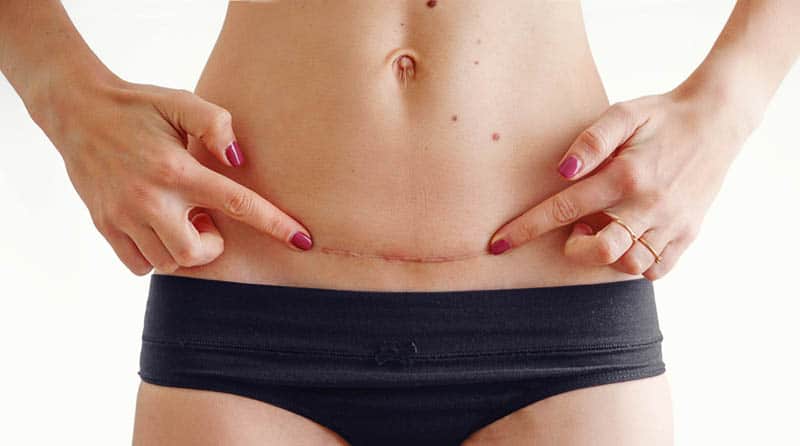
C-section scar pain isn’t the only thing on a mother’s mind concerning the procedure. It’s the scar itself and what it can represent for them.
Apart from the increased exposure to infections and many other health risks that come with it, getting such a scar on one’s body may strike fear in a mother.
She may start thinking she’ll end up being branded as an inferior mom and treat the scar as something she should be ashamed of.
But, that is entirely untrue, at least in my opinion.
Every mother who’s gone through a C-section surgery should feel proud for enduring through such an ordeal.
For choosing what was right: the safety of her child that she’s now cradling in her arms and breastfeeding.
She should treat it as a symbol of pride, a medal for being strong enough to go through the procedure and come out a better person for it.
While I understand the visual appeal of a scar doesn’t exist for many moms, the way you approach it mentally can bring about a lot of positive thoughts.
And, it can help you deal with it a lot better than treating it as a detriment and added source of stress.
2. Increased chance of infection

Sometimes the C-section scar pain comes from an improperly healed scar, but that’s not the only problem at play here.
Should the scar end up in that state, you’re going to be at a higher risk of suffering from an infection than you would normally.
Luckily, with modern science and methods, the chances of improper scar tissue recovery is minimal.
That said, the scar site is still a more compromised area, so infection is a valid possibility.
This is especially true if one doesn’t take good care of it through hygiene and sometimes even medication, depending on the severity of the scar.
It’ll certainly be a lifestyle change when you go through a C-section.
You’ll have to take even more care of your body than before, since infections certainly aren’t fun to deal with.
They can range from mild annoyances to potentially life-threatening situations.
That’s why it’s crucial to always listen to what your doctor and/or healthcare provider says if you want it to have as minimal an impact on your daily routine as possible.
3. Reduced chances of having a vaginal birth

You might think that having a C-section the first time might only be a one-time thing and that you hopefully won’t have to do it again, but sadly this isn’t the case.
Many moms who’ve undergone a C-section surgery during one of their pregnancies have an increased chance of having to do it again for subsequent ones.
This can be because of a few reasons, the main one being the risk of the scar tissue from the previous C-section delivery rupturing, which brings about a whole manner of issues.
And no mom wants that C-section scar pain to come back and become too intense because she’s pushing for a “natural birth.”
She’s more likely to listen to the medical advice of her obstetrics professional (OBGYN) or any other qualified healthcare provider instead.
She’s going to choose to undertake yet another C-section delivery in favor of not rupturing her abdominal wall.
The other potential reason can simply be various health problems, something that stays the same from the first pregnancy.
The complications that could arise then could arise now just the same, if not be more possible than before.
4. Issues getting pregnant again
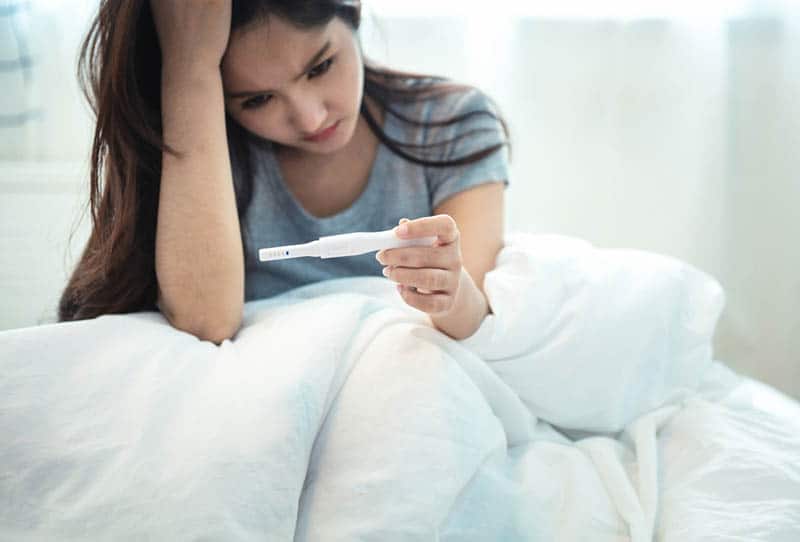
C-section scar pain is definitely not the worst of your worries after getting a C-section.
Another problem that a can arise from it is the reduced likelihood of conceiving a child.
And the reason, once again, comes from the fact that the scar tissue from the incision site and everything underneath it can connect to the surrounding organs during the healing process.
This is known as secondary endometriosis.
Think of it as the scar healing incorrectly.
While not as likely as some of the other C-section complications that you might encounter, it does happen.
The consequences of secondary endometriosis can lead to very intense pain in the lower abdomen and surrounding area.
It also increases the risk of bacteria build-up around very sensitive areas due to now potentially compromised body parts.
This can unfortunately lead to mothers having a very hard time conceiving again, if at all, due to the intense pain felt during the whole process of conception.
And, even if you do somehow manage to conceive, the pregnancy might end up being a very high-risk one.
Not only that, but the whole pregnancy is likely to be riddled with harsh jolts of pain.
To follow-up on that, the postpartum recovery process itself may become that much more difficult and last longer than intended.
5. Increased chance of needing a hysterectomy

A hysterectomy is another major surgical procedure, except this one does something a bit more permanent.
It serves to remove the mother’s uterus/womb from the body due to rising risk factors and complications.
It’s a procedure that isn’t all too common post-Cesarean, but it often becomes a requirement later on in life for a number of women.
And for women who’ve had to go through one or more emergency C-sections for their pregnancies, the potential need for it earlier keeps rising.
This is mostly due to the surgical scars and the internal scars left behind by the C-section on the internal tissue and even some organs at times. And the more C-sections had, the more scar tissue there will be.
This ends up causing further complications down the line, with hysterectomy being the worst one.
Sometimes it can happen when a mamma is very young too. And it can be devastating knowing that you have to consent to your own infertility by having major surgery, just so you get to live a normal life
6. Future toilet issues
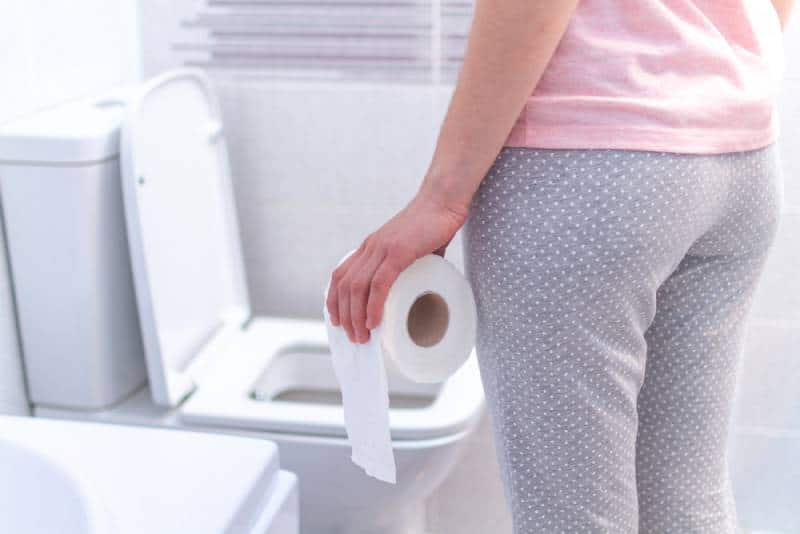
C-section scar pain isn’t the only aftereffect of a Cesarean delivery.
Your pelvic floor also ends up suffering, leaving your bladder control a lot weaker than it used to be.
Sometimes it gets so bad that you aren’t able to hold your bladder or bowel movements in for any amount of time.
And sometimes you may end up with the opposite problem: constipation.
Apart from incontinence, you’re also very likely to feel unwanted cramping in your lower abdomen.
It’s very similar to cramps during your menstruation cycle, regardless of whether it’s your bladder or other organs and/or muscles.
You’re also likely to experience some pain in the general area and even the odd spasm.
That said, as worrying as this is, most of this is rather common for women in postpartum recovery.
Though, the chances are higher and symptoms more intense in women who’ve undergone a C-section delivery.
Whatever the case may be, it’s best for you to make a visit to your gynecology clinic and chat about what can be done to make your situation more bearable.
7. Abdominal wall becomes weaker
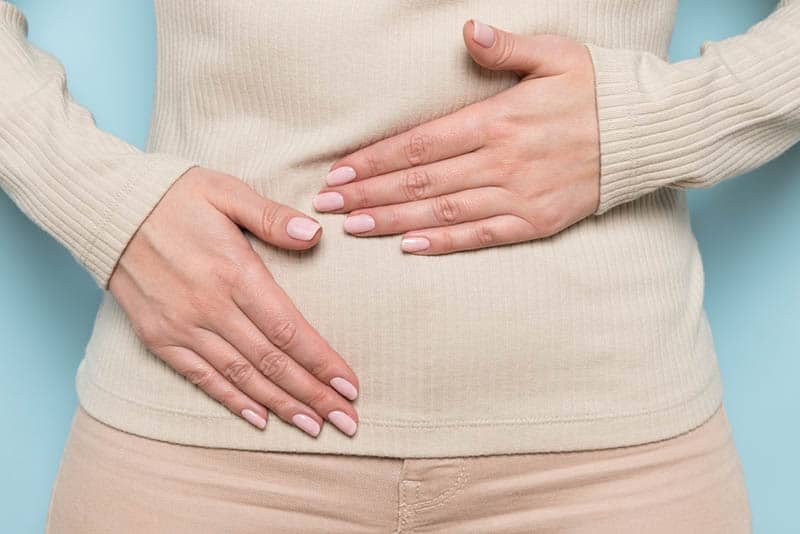
A C-section requires slicing through a mother’s abdominal wall as one of the layers to get through to the baby and pull it out of the uterus.
It’s a major abdominal surgery and something that’s going to leave lasting aftereffects, ones that many people rarely ever think about.
Such muscle tears and distension take a long time and lots of proper exercise to recover from.
It’s not something that goes away in a week or two either, but anywhere from 1 to 3 months to properly deal with. And that’s accounting for proper physical therapy.
Why physical therapy?
Well, you’ll find that even when we’re sitting down, we use our abdominal muscles quite a lot during our daily lives.
Having them not recover properly or giving them too much rest is just going to end up causing us more pain in the long run.
That’s why it’s necessary to seek help from a qualified physiotherapist. He’ll show you the necessary steps and procedures to help alleviate strain from the affected muscles.
He can also teach you the exercises needed to help your pelvic floor / abdominal wall recover properly.
You don’t want it developing into a long-term complication, trust me.
8. Adhesions
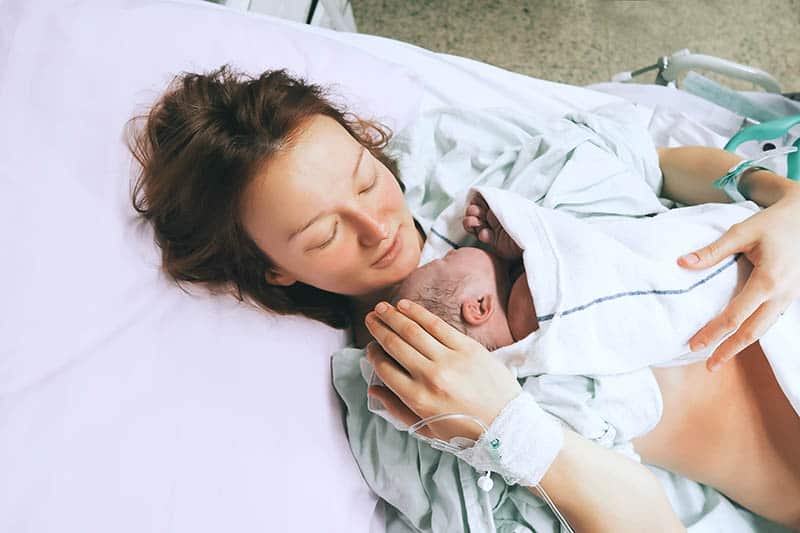
Adhesions are tricky. They’re not something exclusive to C-sections alone, but can form after any form of surgery.
An adhesion is a growth that connects parts of the body that are normally not meant to be connected.
This is the body’s response to intense trauma caused by surgery or a major accident.
The problem with adhesions when it comes to C-sections specifically is the sudden appearance of sharp abdominal pains and endometriosis, among other things.
They may even end up connecting the tissue inside the uterus and your Fallopian tubes, preventing further ovum from exiting your ovaries and entering the uterus properly.
The biggest issue is that most of them initially show up as benign.
That’s why it’s crucial to note any changes in your health and report them to your doctor immediately, so he can intervene where needed.
9. Problems with the placenta

If scars grow back wrong and connect to the tissue of the uterus, trophoblasts may develop and spread outside of the placenta.
Trophoblasts are placental cells that are meant to provide nutrients to the embryo after conception and having them present elsewhere in the body could lead to many problems.
It’s a rather serious complication as normally your uterus is supposed to detach from the uterine wall.
But, in this case, it stays connected. This can lead to severe blood loss among other things and needs immediate medical intervention, usually involving a hysterectomy.
This, unfortunately, is going to leave you completely unable to conceive children again.
On the other hand, you may also encounter a different, albeit milder complication in comparison called placenta previa.
This is an issue in which the placenta grows over the cervix either fully or partially, covering the baby’s “exit route” and creating major issues during the third trimester and delivery.
The most common and serious issues are vaginal bleeding and preterm birth.
Luckily, unlike the previous problem, this one will not need a hysterectomy, only a good bit of rest, refraining from any overly strenuous activity or interaction with the cervix.
This way, you reduce the chance of bleeding during pregnancy and potentially causing further problems.
10. Increased chance of sepsis
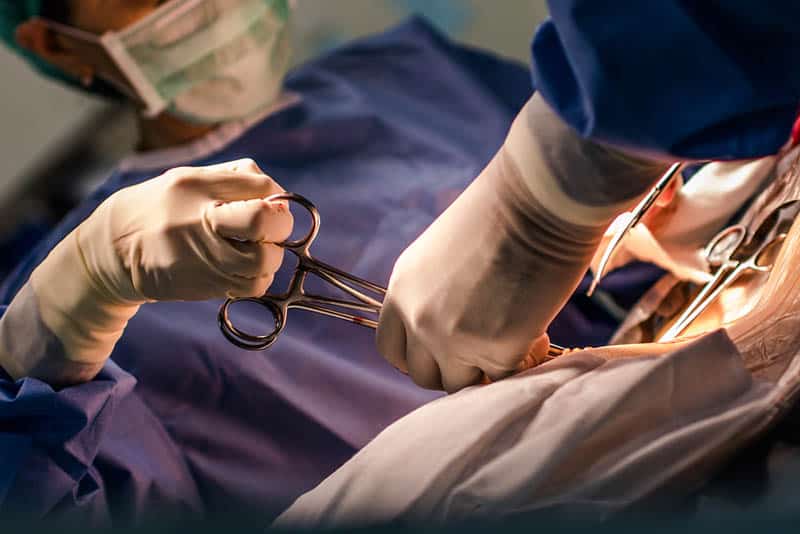
Speaking of infections that pose a danger to women’s health, sepsis is arguably the most dangerous (and lethal) one of all.
If spotted and diagnosed in the early stages, sepsis can be properly managed through antibiotics to not allow its symptoms to manifest as severely as it would otherwise.
But, should sepsis go unchecked for too long, the resulting complication can be debilitating, if not potentially fatal.
Sepsis is a condition characterized by a chemical imbalance in your bloodstream where your immune system (antibodies) attacks your own body in an attempt to fight off infection.
Should this imbalance become too severe, you may end up with a drastic drop in blood pressure.
This, in turn, reduces blood flow throughout the body that can result in life-altering and sometimes fatal complications.
This sudden shift in blood pressure and resulting organ failure that results from sepsis is what’s known as septic shock.
As the risk of infections due to a C-section scar increases, so too does your chance of suffering from sepsis.
Know that you need to take all proper precautions and care of your body, and that it’s not just you who’s at stake here, it’s your child too.
11. Higher chance for UTIs

As many other infections having a higher chance of occurring, the same goes for urinary tract infections (UTIs) too.
It’s something most mothers have to deal with both while pregnant and recovering postpartum.
But, moms who’ve had a C-section have it even worse due to their weaker pelvic floor.
The urine ends up lingering longer inside the urinary tract, which can lead to an infection. While not as lethal as sepsis, it can still be quite annoying and painful all the same.
Especially with how disruptive it can be to your daily routine when you get a sudden urge to pee, but there’s nothing when you finally get to the toilet.
Of course, that’s not the only symptom. A UTI is much like any other mild infection with some symptoms akin to a cold.
Think a low grade fever, a bit of fatigue, and even some pelvic pain to boot.
Unfortunately, the pain is more intense if you’re a mother who’s undergone a Cesarean section. And, again, it’s the weakened pelvic floor that’s to blame.
You can expect more frequent UTIs if your scar heals poorly and the tissue implants with your bladder.
12. Endometriosis

Endometriosis is what you call the merging of uterine tissue with the adjoining organs.
It’s something that’s much more likely to happen after a C-section (5 to 20 times more likely, in fact), but can occur without having had the surgery.
In this case, endometriosis is when the C-section scar tissue heals improperly and ends up implanting itself into the tissue of other organs.
This, in turn, can cause tremendous amounts of pain during future pregnancies and attempted conceptions.
Thankfully, endometriosis after C-section is a treatable condition, either through antibiotics or additional surgical procedures.
Yes, I know, more surgeries sounds scary, but if you want to unmerge the tissue and not have to endure pains when trying to conceive, I’d say it’s a necessity.
And, luckily, there’s no wrong time to do it either, since it won’t turn into any further complications on its own.
Though, depending on what is merged, the surgery risks may be too great to attempt or your body might not be able to handle it.
So, don’t feel bad about having to deal with it in case surgery becomes an impossible option. You can still live a normal life even with endometriosis.
13. Atony
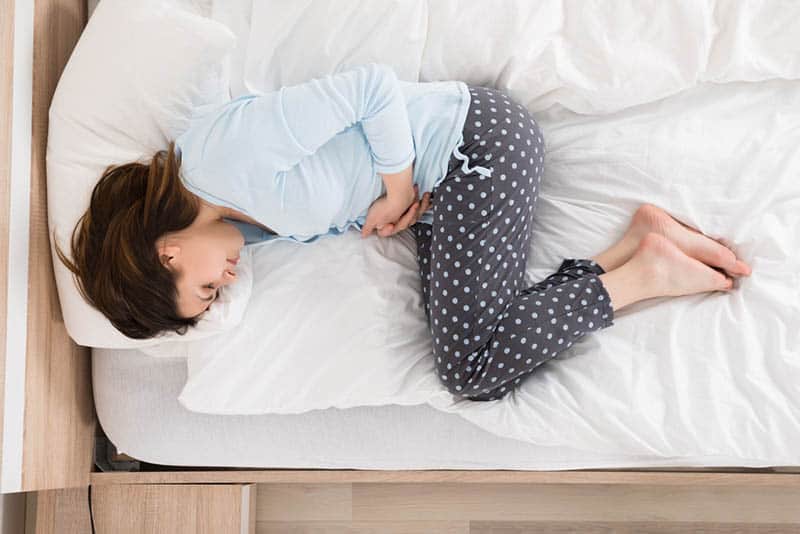
Atony is a condition where the uterus stays relaxed and doesn’t retract back to its original position after delivery.
It’s rare to see it happen from a vaginal birth unless the mother gives birth to multiples.
But, going through a C-section birth makes it more likely for atony to happen.
The main symptom of atony is pain followed by hemorrhaging around the uterus itself.
While by no means deadly or life-threatening in most cases, due to it being a very treatable condition via specific medication, on rare occasions the medicine does not help.
In that case, you might have to resort to a hysterectomy.
That said, this drastic complication can be avoided entirely if you just take note of anything that might seem off after a C-section or any other major abdominal surgery.
Make sure to report any changes to your doctor so he can follow the progress of your recovery and catch any potential problems.
14. Keloid formation
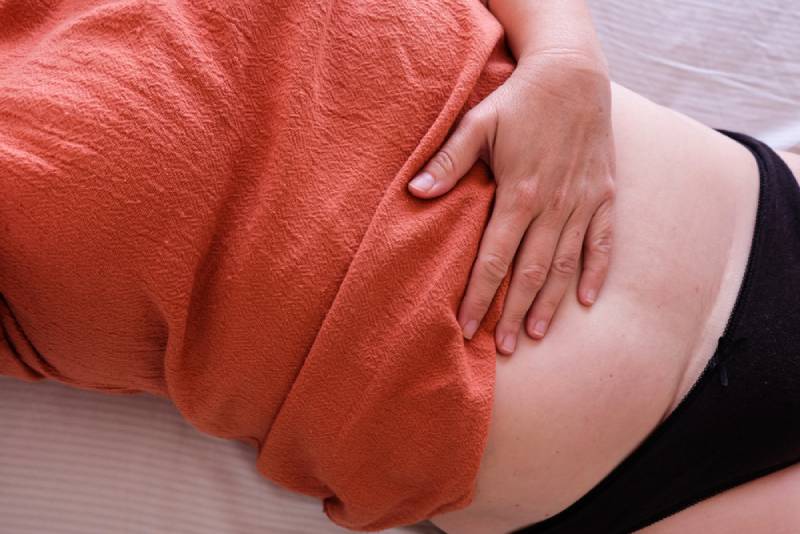
A keloid is a form of overgrown scar.
It happens when the collagen found within our skin that’s used for wound repair grows the scar to a much larger size than intended.
This leads to it appearing somewhat swollen.
It’s something more common in younger people and in those who come from tropical climates due to the higher presence of collagen in their skin.
It can also occur as a body’s response to severe physical trauma like that of C-section surgery.
So, if you find your C-section scar looking a bit more bloated than usual, don’t fret.
It’s nothing lethal or life threatening, just a real annoyance with itchiness and dull pain that feels like needle pricks at the area.
15. Delayed return of your menstrual cycle

As a final note, you might have issues with the return of your menstrual cycle after you give birth.
Normally it’s a process that takes anywhere from around 2 months to a year after your baby is born.
During this time, you won’t have to deal with any menstrual cramps atop the other things you have going on postpartum.
There are usually two main causes to these delays: how often you breastfeed your child and, subsequently, the hormones involved in that.
Prolactin and oxytocin play a vital role in helping a mother produce a healthy milk supply for her baby.
On top of that, it’s these very hormones that are also responsible for suppressing the menstrual cycle.
Shortly after they subside, alongside the other hormones that are wreaking havoc with your body, you’re likely to see the return of your menstrual cycle.
The other main reason might be the extended postpartum recovery period from a C-section.
While the surgical procedure plays a minor role in this case, it’s still a factor that affects the return of the cycle.
EXTRA: How a C-section may affect you emotionally
Outside of physical complications, the procedure is likely to have some effect on the new mom’s mental state.
Emotional repercussions may come in a few different forms:
• Feelings of guilt as a result of the judgmental comments you may receive from people who believe a C-section birth isn’t a “natural birth.”
• A postpartum depression that’s stronger than usual as an aftereffect of peer pressure and physical pain.
• Feeling like you’re less of a parent because you’re busy dealing with a longer postpartum recovery period.
• The increased desire for comfort food because the longer recovery period doesn’t let you shed that initial baby weight.
• Being completely put off the idea of subsequent pregnancies that will likely require another C-section.
• Overwhelming emotional stress that only adds to the existing one during the postpartum period.
What You Can Do To Combat These C-section Complications
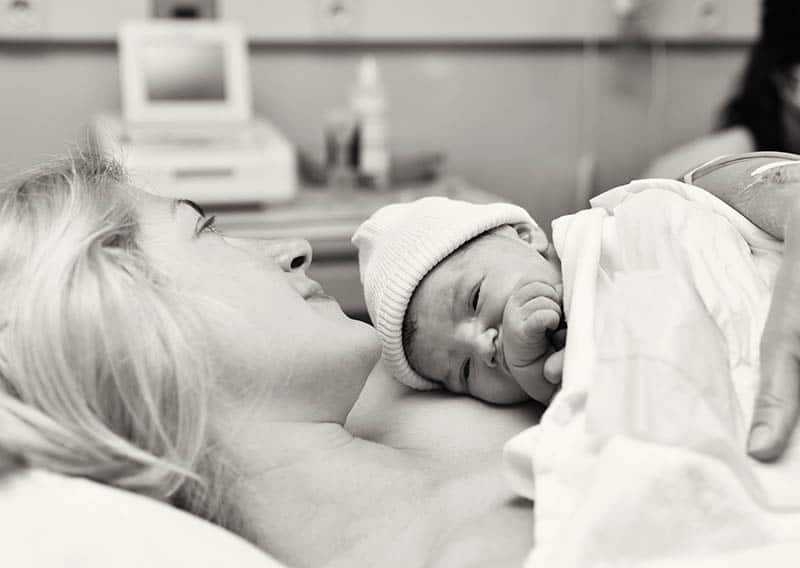
Luckily, many of these problems have solutions that are easy to apply. All they require is a bit of effort on your part to make them happen.
For the more physical issues, it’s best to turn to the advice of an obstetrician, gynecologist, or other qualified healthcare professional.
It also takes some diligence on your part in helping track any potential symptoms and changes to your body that weren’t previously there.
Reacting early helps prevent many of these complications from happening in the first place – or, at least helps in easing their symptoms.
As for the side that affects your mental health in particular, my one piece of advice is to stay strong and not shy away from support groups or therapy.
I know firsthand how hard it can be to have to deal with a C-section delivery, postpartum depression, and all the odd looks you get from people when they know you delivered your child in this manner.
If you have no one else to talk to, a therapist is your best bet. They’re there to listen to your problems and advise you on how to deal with them in a healthy manner.
There’s nothing more in the world that I want than to help all of you struggling mammas out there to not feel excluded, but there’s only so much that I can do via writing.
If there’s one thing I can ask of you, it’s that if you’re feeling depressed, seek professional help to deal with it.
Friends can only get you so far, but having a good listener who lets you vent your frustrations to him without fear of judgment or reprimand can feel cathartic.
In Conclusion
C-section scar pain isn’t the only issue that you have to deal with after you deliver a child through Cesarean section.
It’s sometimes a gateway to many further complications down the line, be they mental or physical in nature. And they could affect you very negatively.
My best piece of advice is that you stay strong and seek help in dealing with them while trying your best to recover.
Dealing with everything that the C-section scar puts on your shoulders can feel really intense, but it’s important to know that you’re not alone.
There are people out there willing to share your burdens.
Don’t be afraid to open up.
You’ll find it much easier to go through life when you do and when you stop caring about the opinions of others regarding how you chose to deliver your child.
Never be ashamed of your choice.
READ NEXT:
Like this post? Please share or pin it for later. You can also stay in the loop and follow us on Facebook, Instagram and Pinterest.

This post contains affiliate links. Please see our full disclosure for more info.

